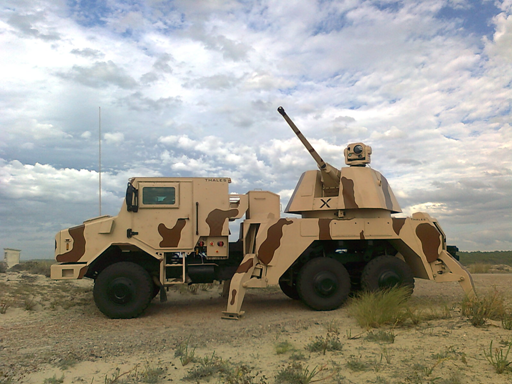French companies Thales and KNDS France have unveiled a new land-based version of their advanced air defense system, Rapidfire Land.
Developed in collaboration with the French Air and Space Force, the system protects high-value military assets and installations, particularly airbases, whether in mainland France or deployed abroad.
The focus is countering modern aerial threats such as drones, light aircraft, helicopters, and even rocket, artillery, and mortar (RAM) attacks.
Drone-killer cannon
A core feature of Rapidfire Land is its 40mm Cased Telescoped Cannon, developed by CTA International, a joint venture between KNDS Systems and BAE Systems.
This weapon was originally made for the Jaguar armored vehicle and is now used for autonomous air defense.
It can carry up to 140 ready-to-fire rounds, which allows it to engage multiple targets without reloading. This ability is crucial in high-threat situations where time is short.
The system stands out because of its planned integration of the A3B airburst ammunition, a next-generation round currently under development.
This projectile is designed to explode mid-air before hitting its target, releasing dozens of tungsten sub-projectiles.
This allows it to cover a broad area, increasing the chances of neutralizing fast-moving or small aerial threats.
The farther away the round explodes from the intended target, the wider the impact zone. The A3B is expected to become operational by 2027, and development is backed by a contract awarded at the end of 2024 for 500 initial rounds.
France buys for Army
Rapidfire Land is not just a gun system; it also includes an advanced fire control system that updates the target’s location after every shot.
This allows it to track and engage moving threats with precision. The system provides a robust defensive envelope with an effective range of up to 4 kilometers (2.5 miles).
It is semi-automated and requires only two operators, who intervene only for weapon engagement and firing, minimizing personnel needs while maintaining operational control.
Thales and KNDS offer the system in two configurations: a semi-mobile version mounted on a fixed 20-foot platform that can be transported and deployed on the ground and a fully mobile variant where the same module is mounted on a tactical vehicle.
This modular approach gives military planners flexibility in deploying the system to static bases and forward-operating positions.
The French Ministry of Armed Forces has already shown strong interest. A firm order has been placed for 14 units, with an option for an additional 34 systems.
These are intended for naval use, with two already installed on the Fleet Replenishment Ship Jacques Chevallier, which has completed live-fire testing during deployments with France’s Carrier Strike Group.
With this success, the land-based version is also expected to gain popularity as a solution for layered air defense. As warfare changes, the threats we face are changing too.
With the rise of drone swarms and precision-guided munitions, systems like Rapidfire Land are likely to become a key part of the next generation of close-in defense capabilities for NATO and allied forces.
